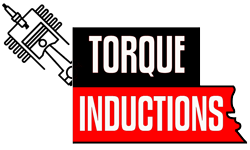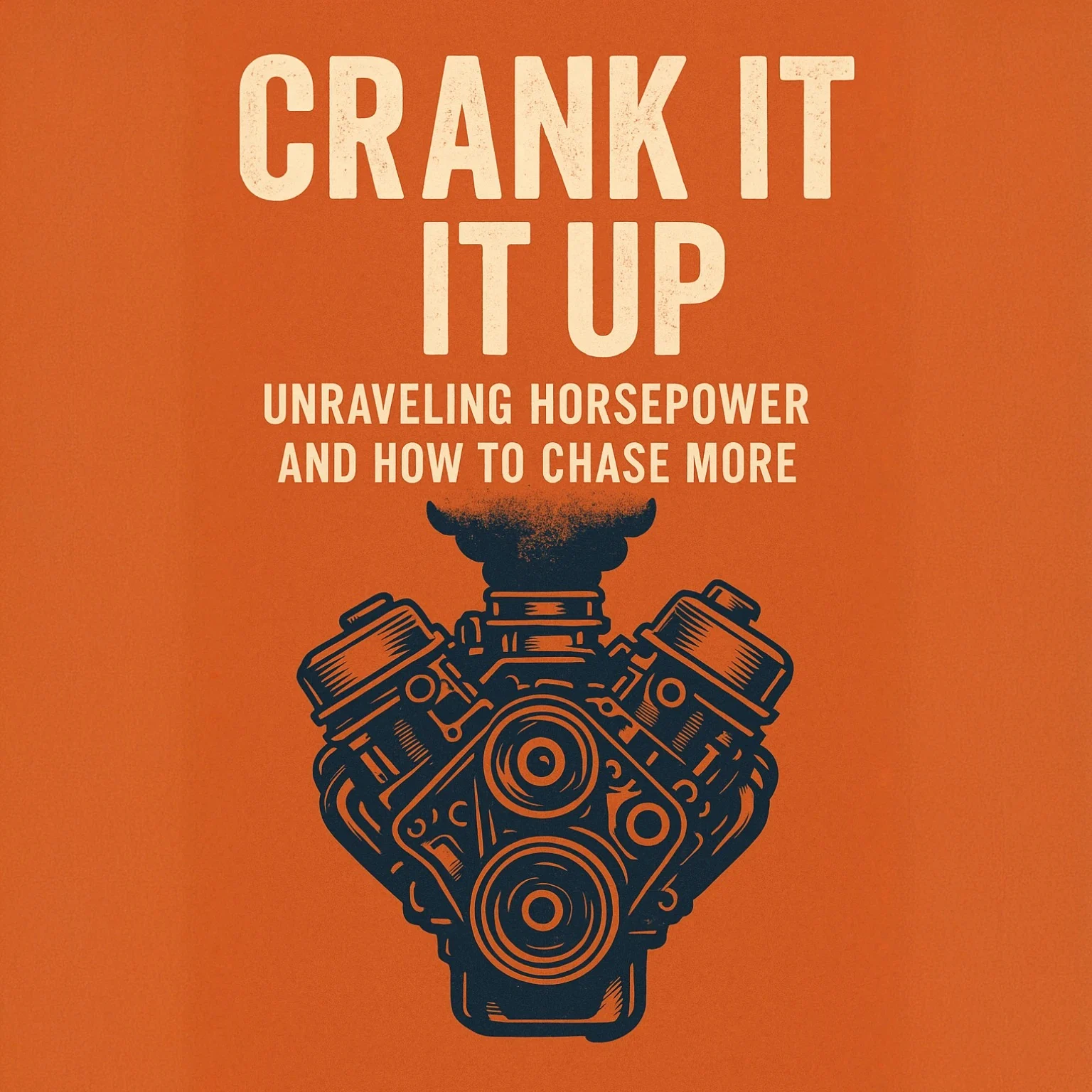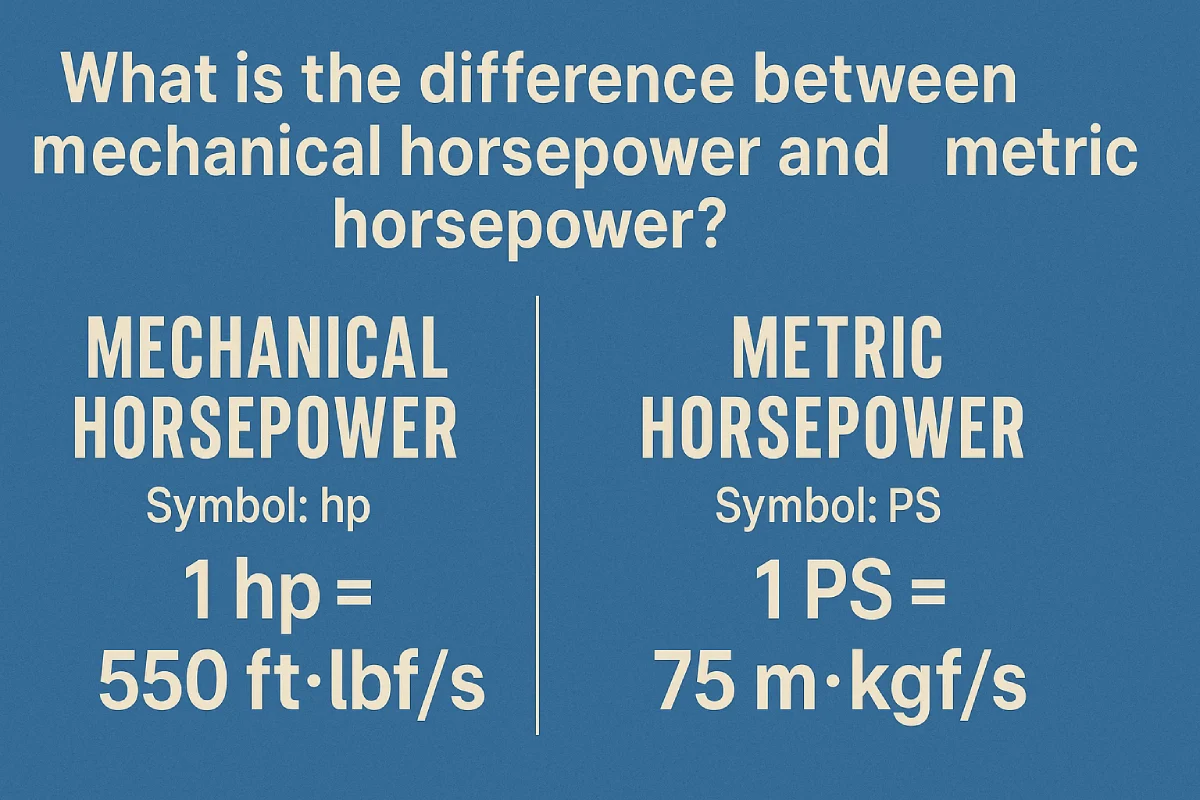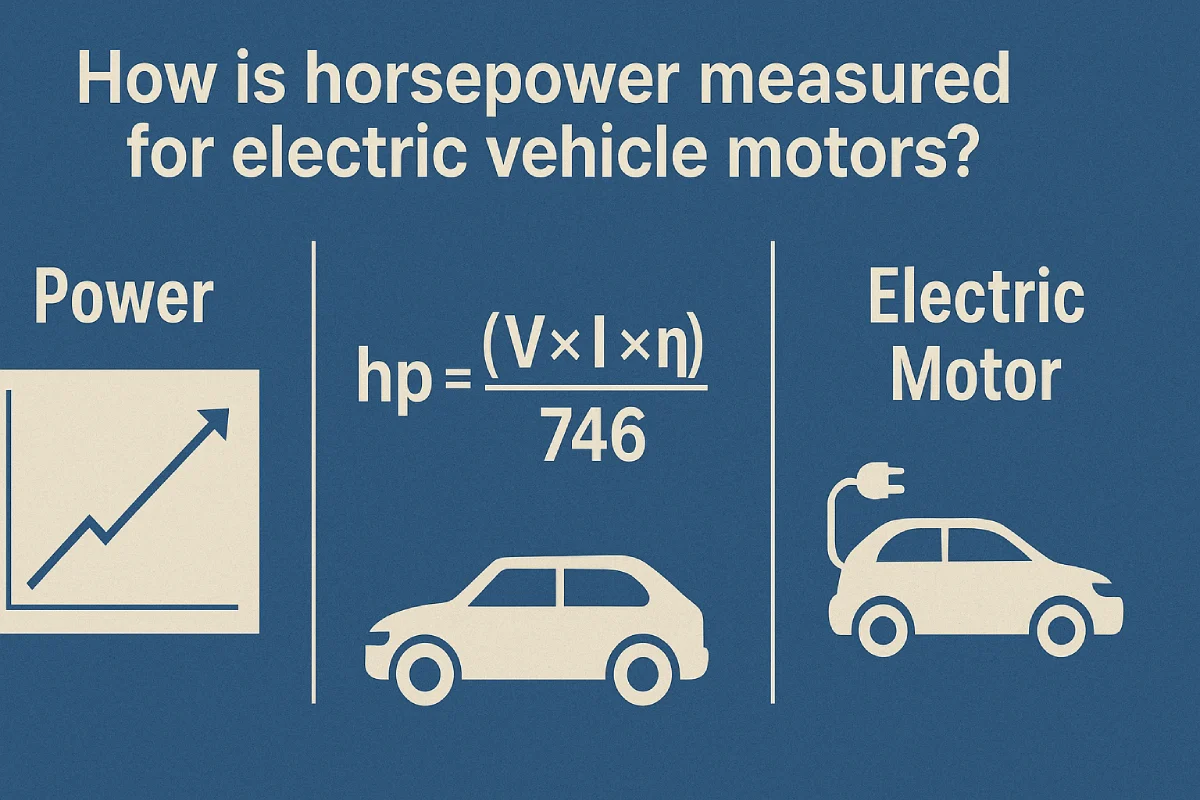- Posted on
- • Performance
Horsepower Unleashed: Secrets of EV Motors, Real Horses, and Steam Beasts
- Author
-
-

- User
- Torque
- Posts by this author
- Posts by this author
-

Crank It Up: Unraveling Horsepower and How to Chase More
Picture this, man: it's a warm summer night, and I'm sprawled out in my garage, grease on my hands, a half-empty chai steaming nearby. My old Yamaha's torn apart, and I'm dreaming of squeezing every last pony out of that engine. Horsepower—that magic word that gets every biker's heart racing—has been my obsession since I was a kid, thumbing through Cycle World and drooling over bikes that could outrun the wind. Whether you're tuning a two-stroke screamer or just geeking out over what makes your ride tick, understanding horsepower is like unlocking the soul of your machine. Let's sit by the bonfire, crack open this beast, and talk about what horsepower really means, where it came from, and how to chase more of it—because, buddy, who doesn't want that rush?

What Is the Technical Definition of Horsepower?
Test Your Motorcycle Knowledge
Horsepower's the yardstick for how hard your engine works. Technically, it's a unit of power—work done over time—measuring how fast your bike can shove itself down the road. One horsepower equals 550 foot-pounds per second, or about 746 watts if you're feeling nerdy. Think of it like this: if your engine's lifting 550 pounds one foot in one second, that's one pony. On a bike, it's the grunt that pins you back when you twist the throttle. I remember my first time chasing horsepower, tweaking my RD350's carbs and praying for a few extra ponies. It's not just numbers—it's the feel, the roar, the way the world blurs. Ever wonder how much power's really under your seat?
How Did James Watt Originally Define Horsepower?
Let's rewind to the 1700s, buddy. James Watt, this Scottish genius tinkering with steam engines, needed a way to sell his machines to folks who only understood horses. He watched draft horses hauling coal and figured one could lift 33,000 pounds one foot in a minute—boom, that's horsepower! It was a marketing trick, but damn, it stuck. Picture a sweaty horse cranking a mill; that's the vibe. Watt's definition wasn't just about raw strength—it was about sustained work. That's why horsepower feels so right for bikes; it's not just speed, it's staying power. Makes you wonder what Watt'd think of a modern superbike, right?
What Does Horsepower Actually Measure in an Engine?
Horsepower measures how fast your engine turns fuel and air into motion. It's the combo of torque—your engine's twisting force—and RPM, how quick it's spinning. More torque at high revs? That's where the ponies pile up. On my old two-stroke, the powerband hits like a sledgehammer at 6,000 RPM, and that's horsepower screaming to life. It's not the whole story, though. A bike with 50 hp can feel wilder than a 100-hp cruiser if the power's delivered right. Ever felt that moment when your bike just sings? That's horsepower doing its thing.
Why Do We Still Use the Term Horsepower for Engines?
Horsepower sticks around 'cause it's got soul, man. Sure, we could use kilowatts—clean, metric, modern—but "100 kilowatts" doesn't hit like "100 horsepower." It's tradition, a nod to the days when machines were new and horses were king. Plus, it paints a picture: a herd of ponies charging under your tank. I've spent nights in the garage, chasing that next horsepower, and every time I hear the word, it's like a call to battle. Why ditch a term that still gets your blood pumping? What's your take—horsepower or kilowatts?
What Is the Difference Between Mechanical Horsepower and Metric Horsepower?
Here's where it gets greasy. Mechanical horsepower—Watt's original—is that 550 foot-pounds-per-second deal, used mostly in the U.S. Metric horsepower (or "cheval-vapeur" if you're fancy) is a tad weaker, about 735.5 watts or 98.6% of a mechanical pony. So, a bike rated at 100 metric hp might only be 98.6 mechanical hp—close, but enough to start bar fights. I've seen guys argue this at bike meets, clutching their beers like it's life or death. It's a small diff, but when you're tuning for every ounce of power, it matters. Ever caught yourself geeking out over these details?
What Does Brake Horsepower (BHP) Mean and How Is It Different from HP?
Brake horsepower (BHP) is the raw juice your engine pumps out before the drivetrain steals some. It's measured at the crankshaft with a dynamometer—think of it as the engine's max bench press. Regular horsepower (like wheel horsepower) is what hits the road after gears, chains, and friction take their cut. BHP's always higher—my RD350's 50 BHP drops to 45 at the wheel, and that's on a good day. Tuning's where BHP shines; you're chasing that crank number. I've spent hours rejetting carbs, cursing at midnight, just to nudge the dyno needle. Ever dyno'd your ride? What'd it spit out?
What Is the Difference Between Gross Horsepower and Net Horsepower?
Gross horsepower is the old-school brag—engine tested without accessories like alternators, pumps, or mufflers. It's the number manufacturers loved in the '60s, inflating specs to sell bikes. Net horsepower is real-world, measured with all the bits bolted on, like your air filter and exhaust. Net's lower—think 10-20% less—because life ain't perfect. I remember old ads hyping "60 hp" bikes that barely hit 50 in reality. Net's honest, but gross had that dreamer's vibe. Which do you trust when you're shopping for a ride?
How Does Indicated Horsepower Relate to Brake Horsepower?
Indicated horsepower is the theoretical max your engine could make, based on cylinder pressure and piston movement. It's like the engine's fantasy football score—ignoring friction, heat, and mechanical losses. Brake horsepower is what you actually get after those losses chew up some power. Indicated's always higher, but it's a starting point for tuners like me, dreaming of what's possible. I've pored over engine diagrams, chasing that gap between indicated and brake. It's like hunting for buried treasure—every tweak gets you closer. Ever cracked open an engine manual just for fun?
Chasing More Horsepower: Tuning Tips and Tricks
Now, let's get to the good stuff—how to crank up that horsepower. First, airflow's king. Swap your stock air filter for a high-flow one, like a K&N, and watch your engine breathe easier. Bigger carbs or fuel injectors—say, 28mm Mikunis on a two-stroke—shove more fuel in, but you'll need to rejet or remap. Exhaust's huge; aftermarket pipes like those from TwoStrokeNuts.com free up 5-10 ponies by cutting backpressure. Porting's where the magic happens—polish those exhaust ports, raise 'em a hair, and the engine screams. Bump compression with a skimmed head, but don't skimp on high-octane fuel, or you'll be rebuilding at 2 a.m. I've done big-bore kits—350cc to 400cc—and it's like strapping a rocket to your back. Picture a tuned bike tearing down a backroad here—alt text: "Horsepower unleashed, cornering fast." It's not cheap, and it's not easy, but man, the rush is worth it.
Why Horsepower Still Rules Today
Horsepower's more than a number—it's a cult. Collectors chase bikes like the RD350 or Kawasaki H1 for that raw, unfiltered power, paying $10,000-$20,000 for a pristine two-stroke. Modern bikes like the Ducati Panigale V4 boast 200+ hp, but there's something about a 50-hp classic that feels alive. Prices for tuned vintage rides are climbing—$5,000 for a scrappy runner, $15,000 for a showpiece—because they're time machines to when bikes had grit. It's nostalgia, sure, but it's also the thrill of chasing more. I've seen guys at rallies, eyes lit up, swapping stories of dyno runs and blown pistons. Picture a row of gleaming bikes at a show—alt text: "Horsepower heroes shining bright." Horsepower's the language we speak, the fire we chase. Ever been part of that buzz?
Why I'm Nuts About Horsepower
Here's the heart of it, dost: horsepower's my addiction. I was 15, sneaking rides on my cousin's beat-up Suzuki, feeling that first powerband hit like a lightning bolt. Every late-night wrench session, every burned finger, every dyno run—it's all for that moment when the bike comes alive. It's not perfect; you'll curse, you'll fail, you'll blow a gasket. But that's why I love it. Horsepower's legacy isn't just numbers—it's the stories, the grease, the brotherhood. From Watt's horses to today's fire-breathing superbikes, it's the pulse of every ride. So, buddy, what's your horsepower story? Grab a wrench, and let's make some more.

How Is Horsepower Measured for Electric Vehicle Motors?
Now, let's talk EVs, man—those silent assassins that'll smoke a gas bike off the line. Horsepower for electric motors is measured differently than for gas engines, but it's still about power output. You hook the motor to a dynamometer, which applies a load and measures torque and RPM. The formula's simple: horsepower = (torque x RPM) / 5,252. EVs often get rated in kilowatts (1 kW = 1.34 hp), but manufacturers convert to horsepower for us old-school gearheads. What makes EVs wild is instant torque. Unlike my RD350, which needs to rev to 6,000 RPM to wake up, an EV's motor delivers max power at zero RPM. Take the Tesla Roadster—288 hp, all there the second you stomp the pedal. I rode a buddy's electric Zero SR/F, and holy hell, it felt like a slingshot. Problem is, dynos don't always catch the full story—EVs can overheat or throttle power to save the battery. Tuning's trickier here. You can't slap on bigger carbs, but you can remap the controller for more current, risking fried circuits. I've seen guys tweak regen braking for better efficiency, squeezing out a few extra ponies. Picture an EV motor humming on a dyno—alt text: "Horsepower measured, EV motor spinning." It's a new world, but the thrill's the same.
| Aspect | Details |
|---|---|
| Measurement Tool | Dynamometer—applies load, measures torque and RPM. |
| Formula | HP = (Torque x RPM) / 5,252—same as gas, but EVs hit peak torque instantly. |
| Power Unit | Often kilowatts (1 kW = 1.34 hp)—converted to hp for U.S. markets. |
| Key Trait | Instant torque at 0 RPM—full power from a standstill, no rev buildup. |
| Example | Tesla Roadster: 288 hp, Zero SR/F: 110 hp—feels like more off the line! |
| Tuning Options | Remap controller, adjust current—careful, or you'll cook the motor. |
| Challenges | Overheating, battery limits—dynos may not capture real-world bursts. |
Ever felt that EV punch? It's like cheating physics, man!
How Much Horsepower Does an Actual Horse Produce?
Here's the kicker: a real horse ain't pumping out one horsepower all day. James Watt's 33,000 foot-pounds-per-minute benchmark was based on a draft horse's sustained work—like hauling coal for hours. But a horse's actual output? It's messy. Studies, like ones from the 1925 Iowa State Fair, show a horse can hit 14.9 hp for a short sprint—think a galloping Clydesdale—but over a workday, it's closer to 0.75-1 hp. Watt fudged the numbers to make his steam engines look badass. I've watched horses pull logs at a county fair, muscles rippling, and you can feel the raw power. But they tire fast—unlike my bike, which'll scream 'til the tank's dry. Ever seen a horse go all-out? It's humbling, but they're no match for a tuned engine.
| Context | Horsepower Output | Notes |
|---|---|---|
| Sustained Work | 0.75-1 hp | Average over 8 hours—Watt's baseline for a draft horse hauling coal. |
| Peak Sprint | Up to 14.9 hp | Short bursts, like a gallop—measured at 1925 Iowa State Fair. |
| Typical Horse | ~1 hp | Daily average for a healthy workhorse—varies by breed, size, fitness. |
| Comparison | Human: 1.2-2.5 hp | Trained athletes can outdo a horse in short bursts! |
| Watt's Estimate | 1 hp = 33,000 ft-lb/min | Marketing trick—overestimated to hype steam engines. |
Makes you rethink that "horsepower" sticker on your tank, huh?
What Was the Horsepower of Early Steam Engines?
Back in the 1770s, James Watt's steam engines were game-changers, but they weren't exactly superbikes. His early models, like the ones sold to brewers, cranked out 5-10 horsepower—enough to outwork a team of horses. The math was rough: nominal horsepower (nhp) assumed 7 psi steam pressure, using the formula nhp = (7 x piston area x piston speed) / 33,000. A typical engine with a 20-inch piston and 100 feet-per-minute speed might hit 5 nhp, but real output (brake horsepower) was closer to 3-4 hp after friction losses. I've seen replicas at steam shows, chugging away, smoke everywhere. They're clunky, but there's a raw beauty in 'em.
| Engine Type | Horsepower | Details |
|---|---|---|
| Watt's Early Engines | 5-10 nhp | Nominal rating—real output ~3-6 bhp due to friction, leaks. |
| Formula | nhp = (7 x area x speed) / 33,000 | Assumes 7 psi, piston area in sq. in., speed in ft/min. |
| Example | 5 nhp | 20-in. piston, 100 ft/min speed—common in 1770s mills. |
| Losses | 20-40% | Friction, steam leaks—indicated hp was higher than brake hp. |
| Applications | Mills, pumps | Replaced horses in coal mines, breweries—sparked Industrial Revolution. |
| Tuning | Boiler pressure, valves | Risky—overpressure could blow the thing sky-high! |
Ever smelled a steam engine's coal smoke? It's like history in your lungs.
NEXT CHAPTER SOON
-Hashtags -#HorsepowerHustle #TwoStrokeLife #EVMotors #SteamEngineVibes #RealHorsePower #BikerTales #TuningTricks #VintageRides #MotorcycleMadness #GearheadDreams
